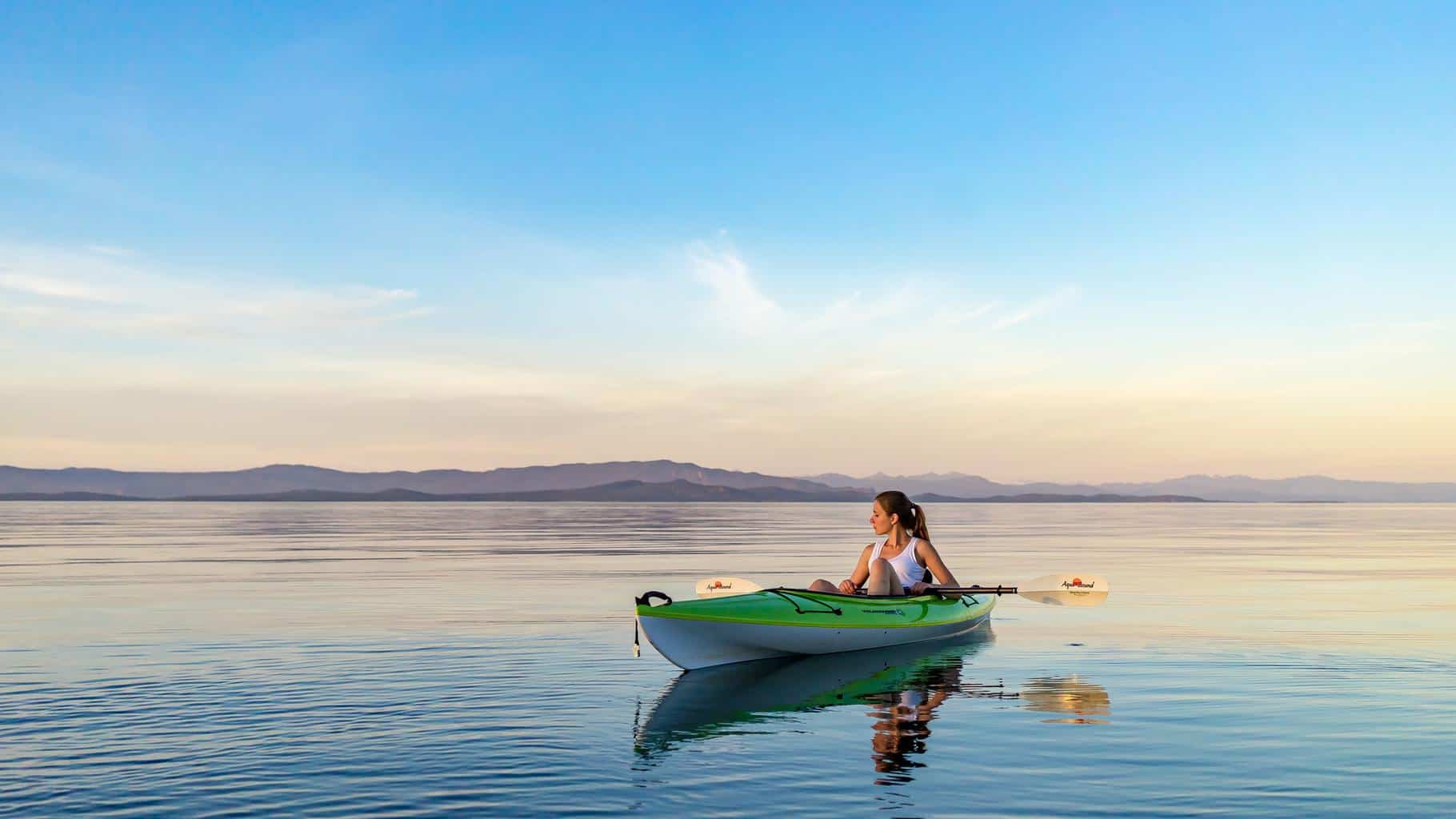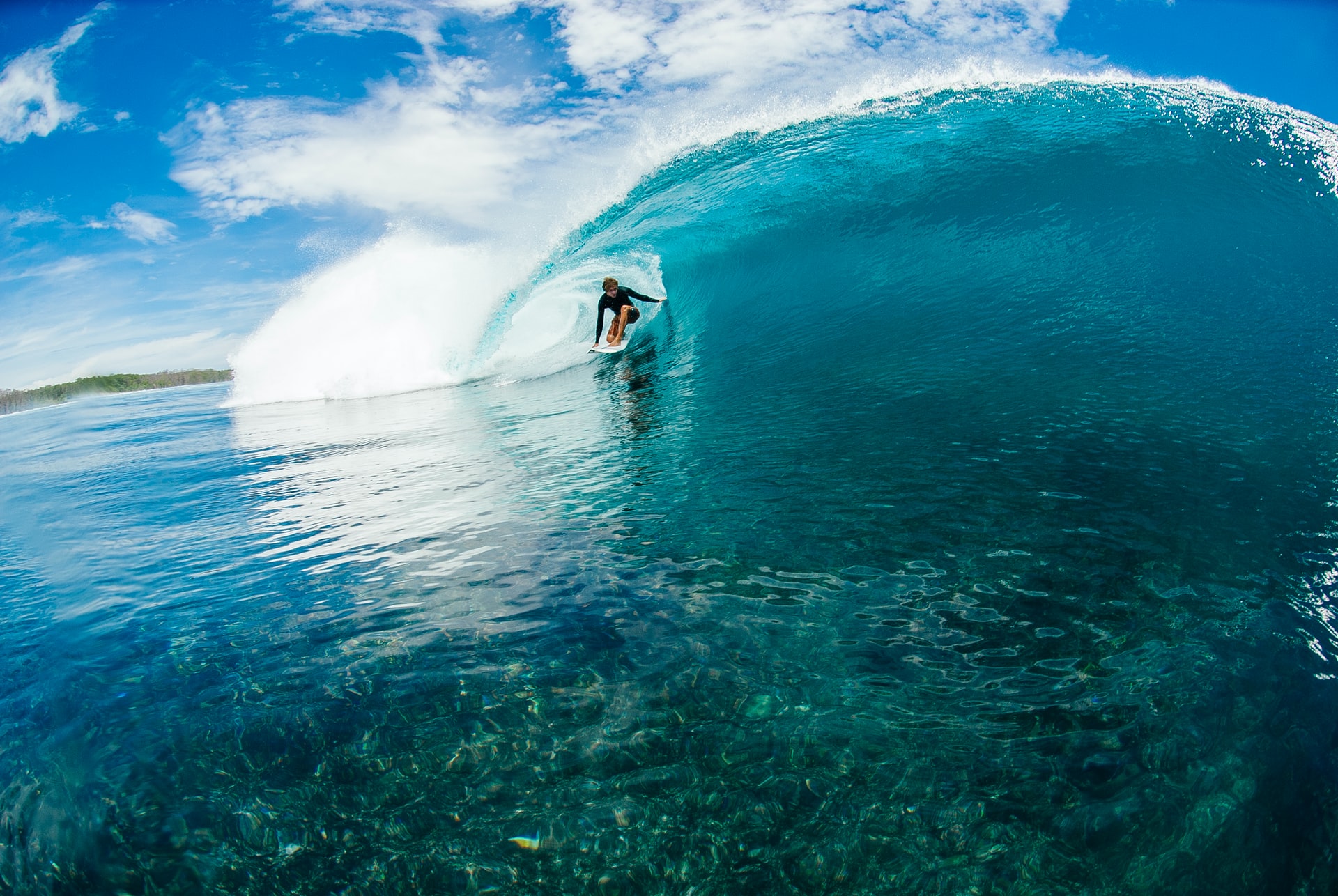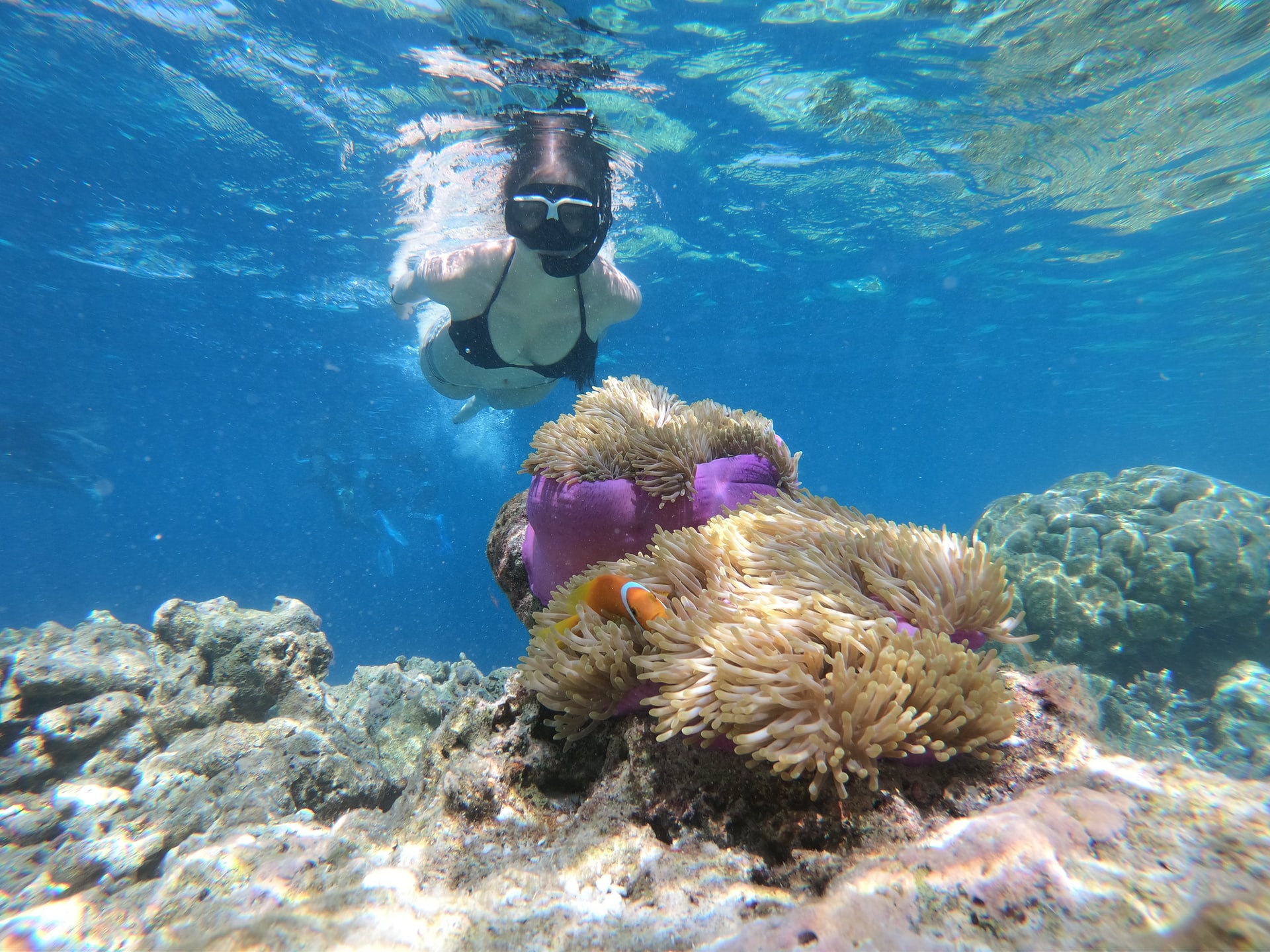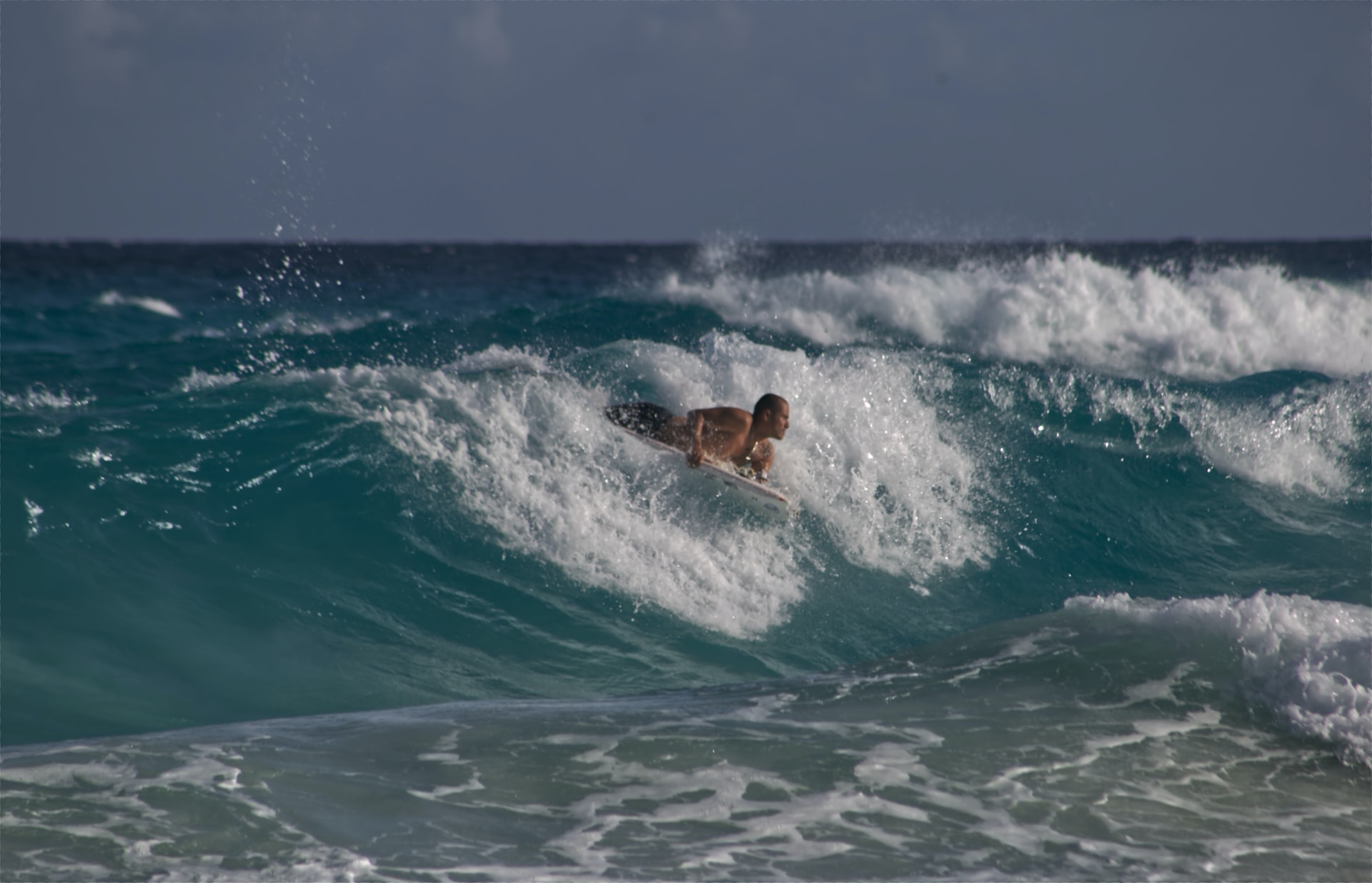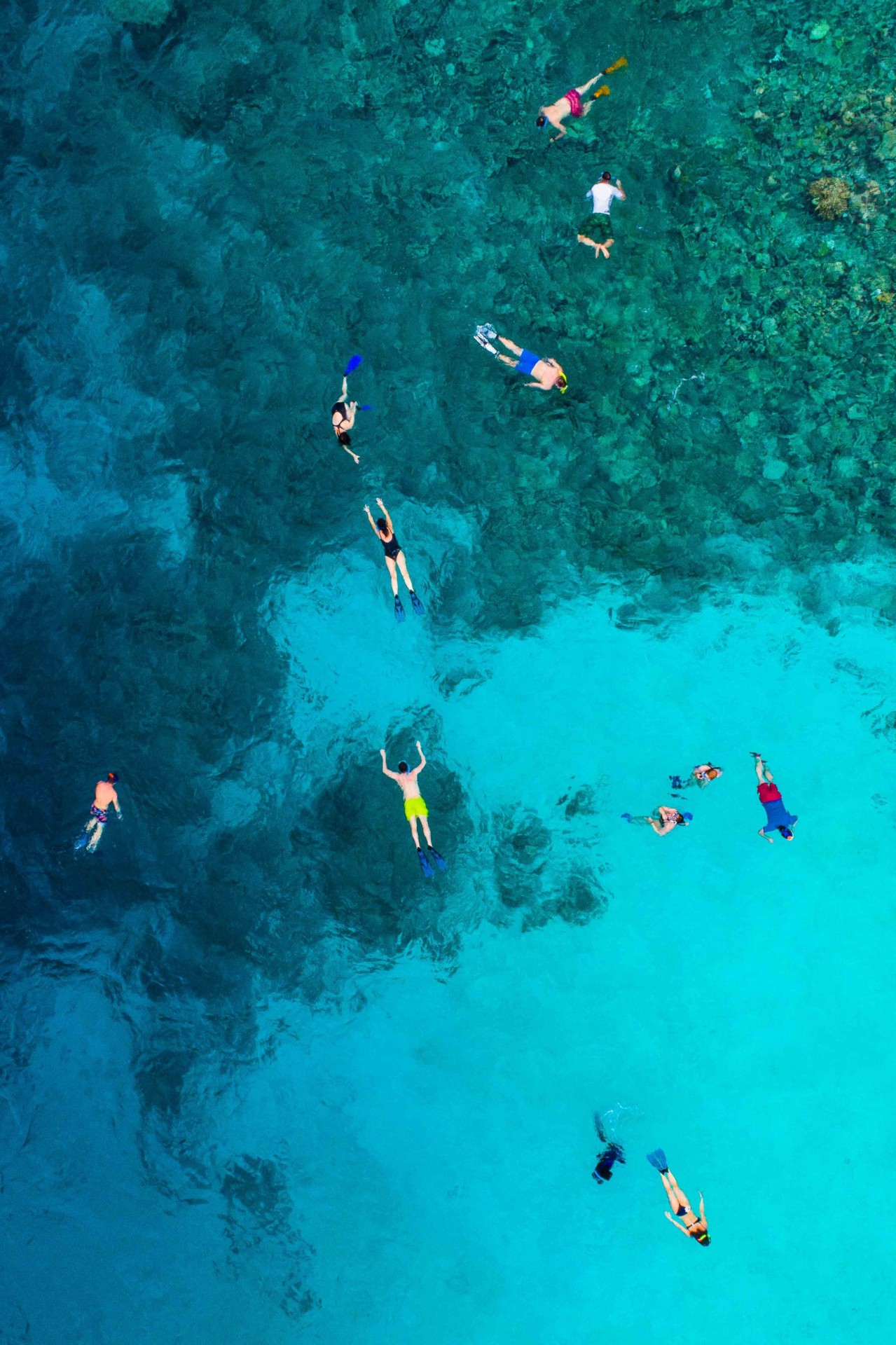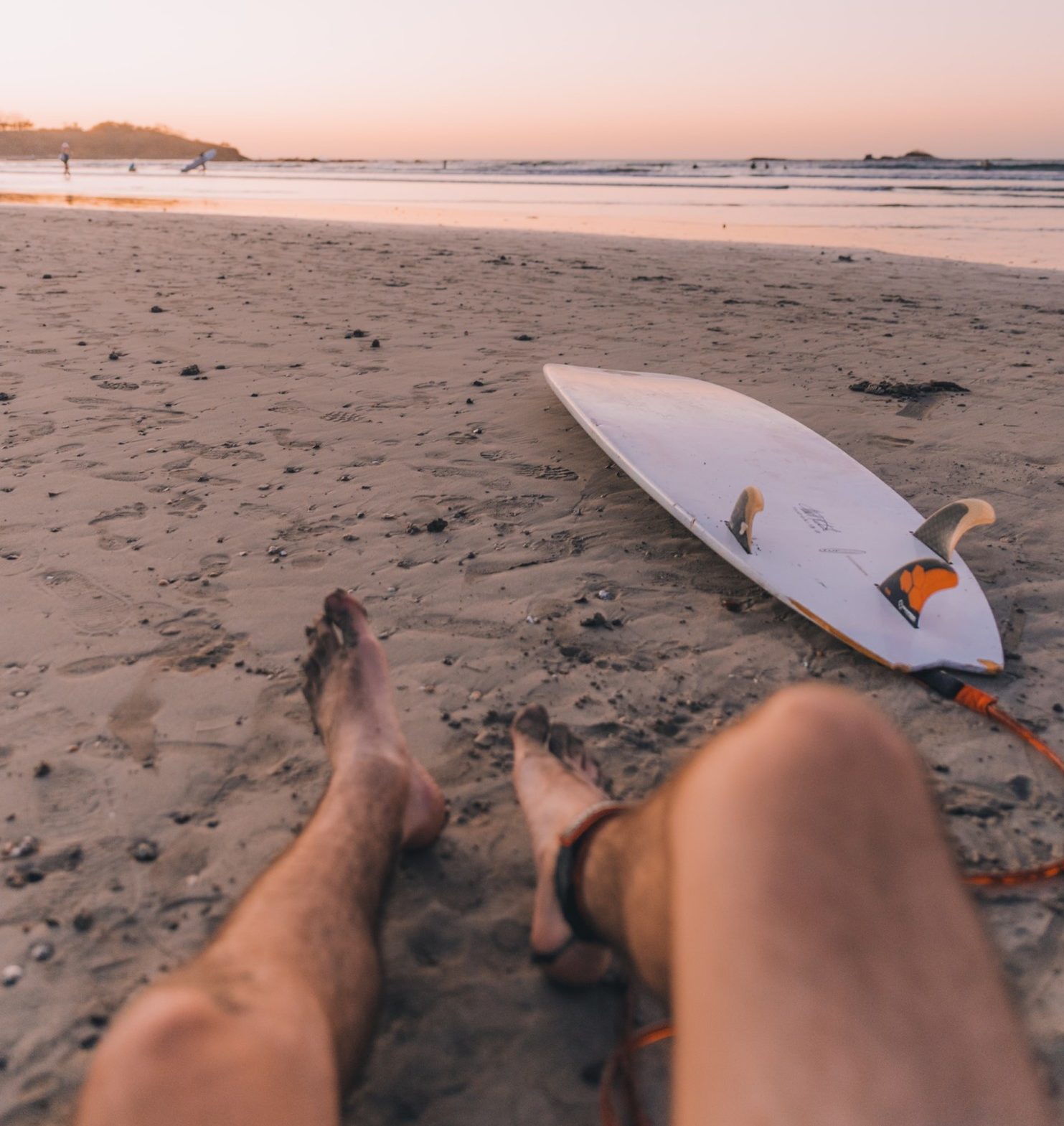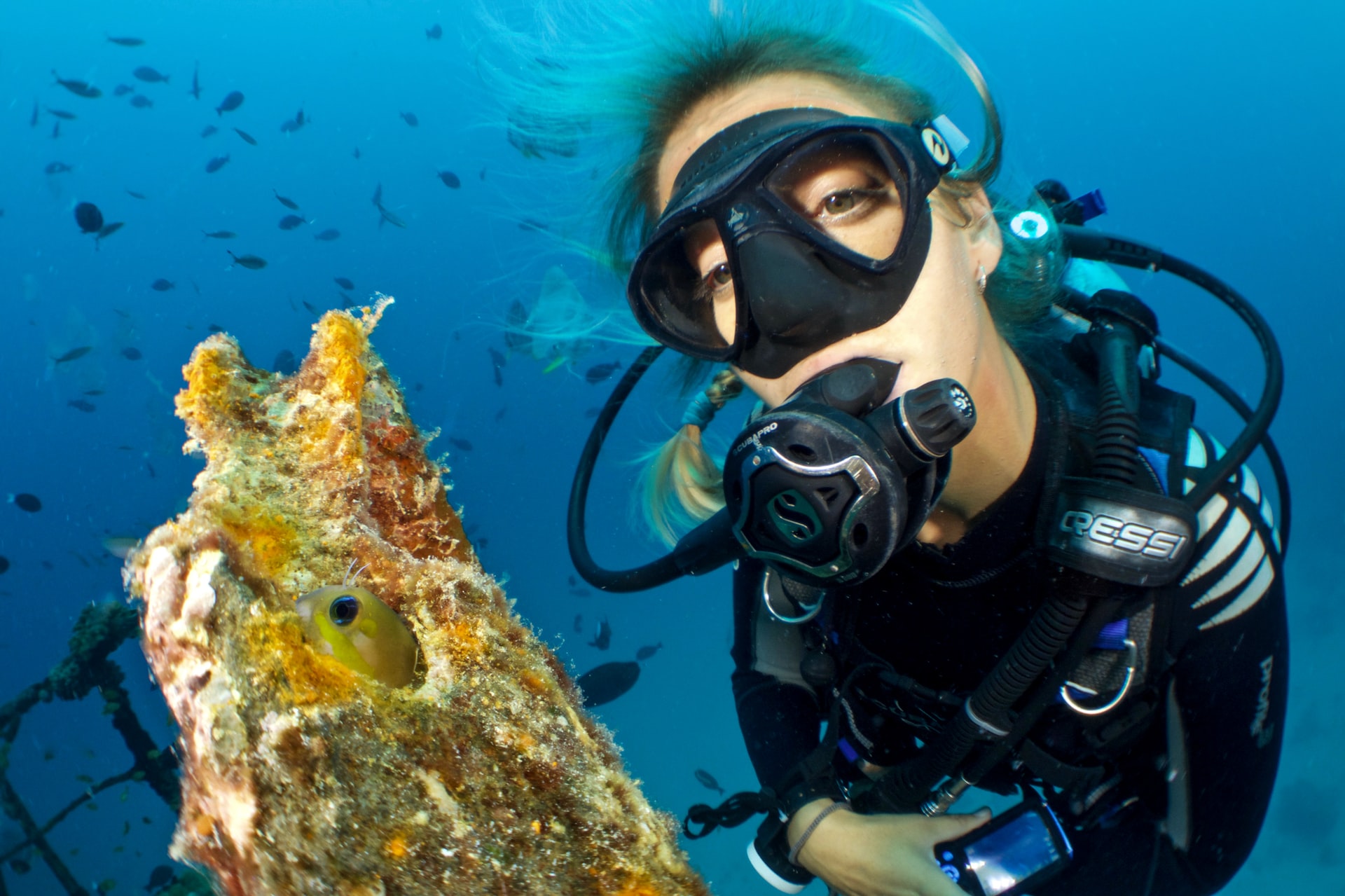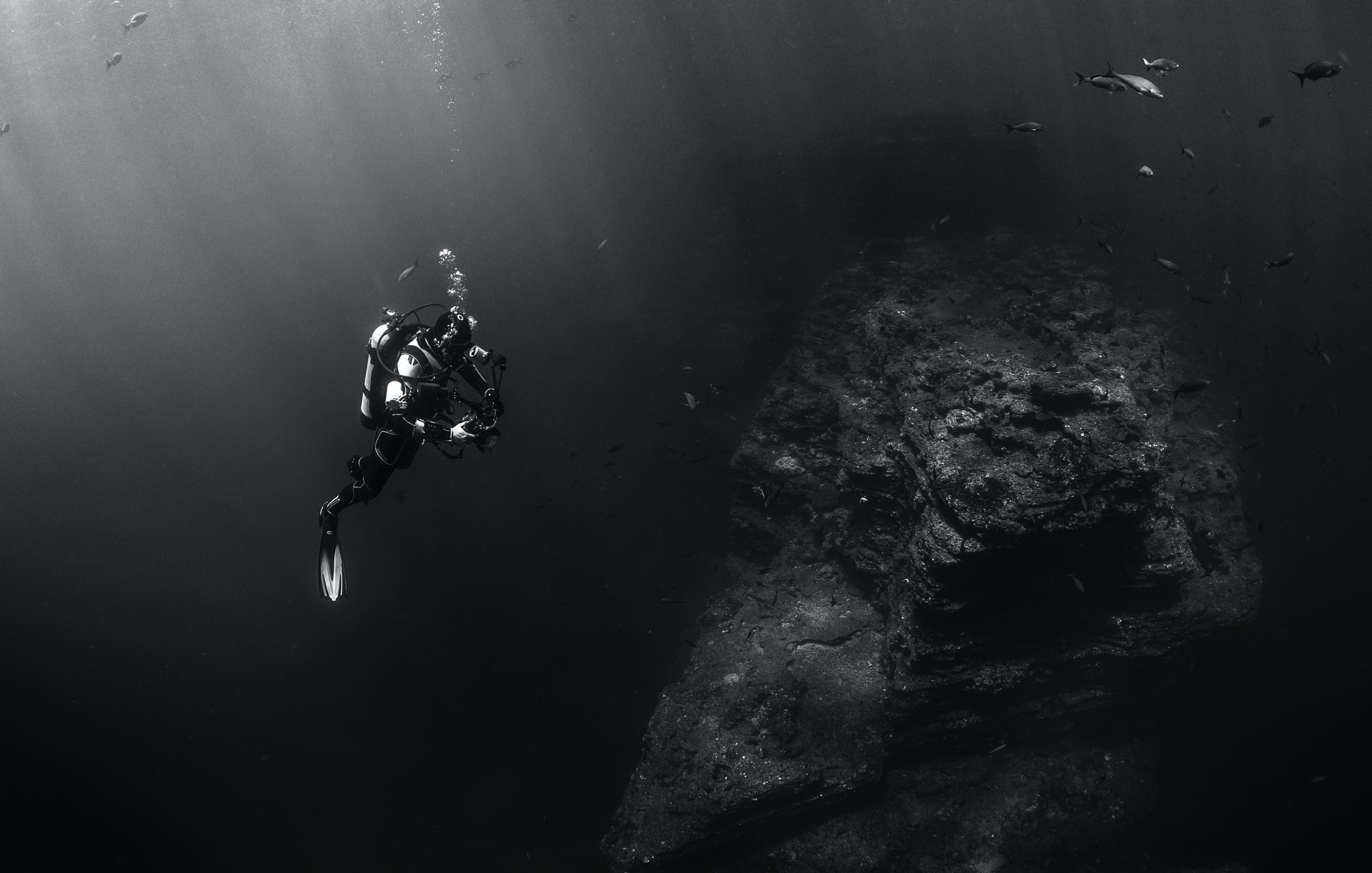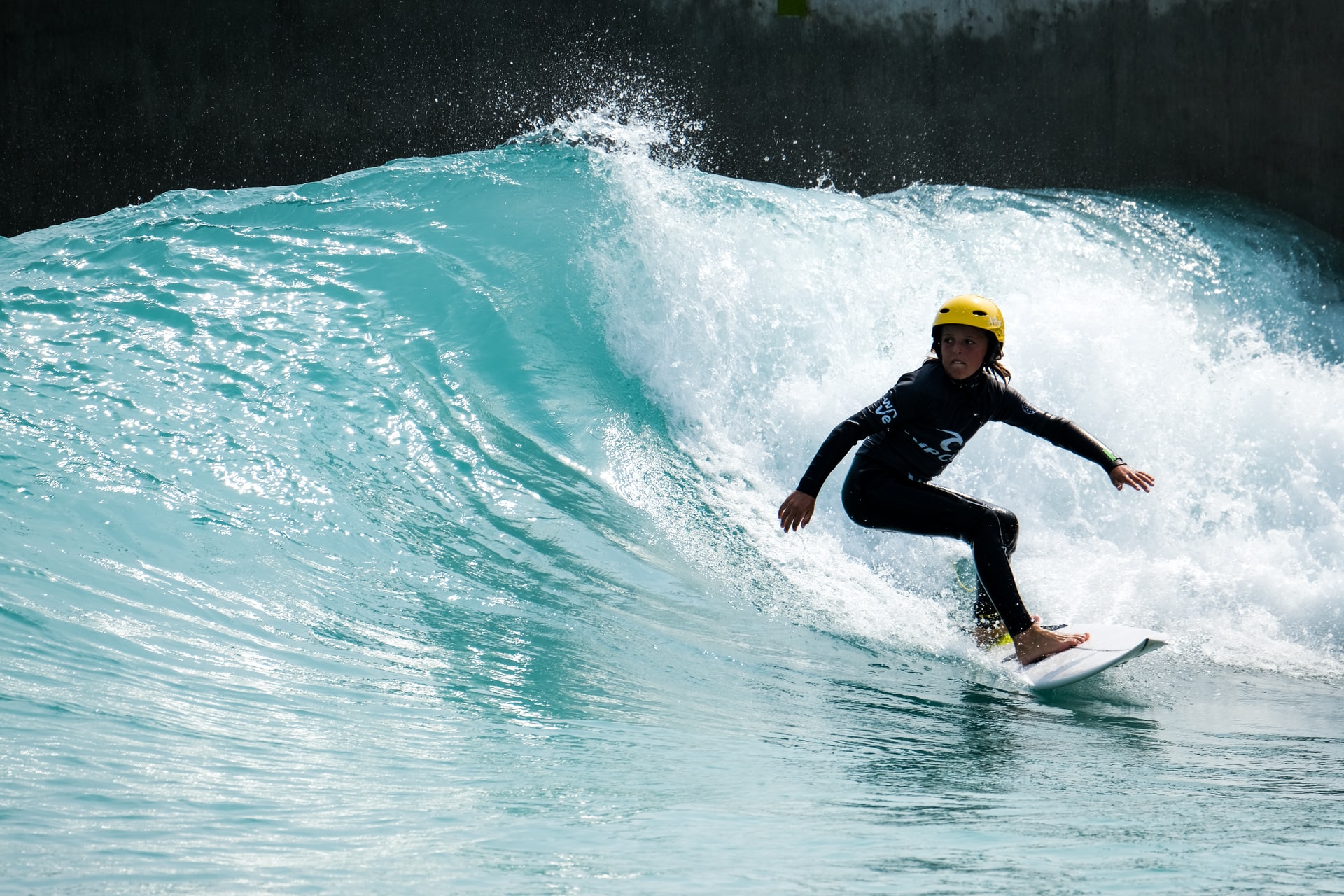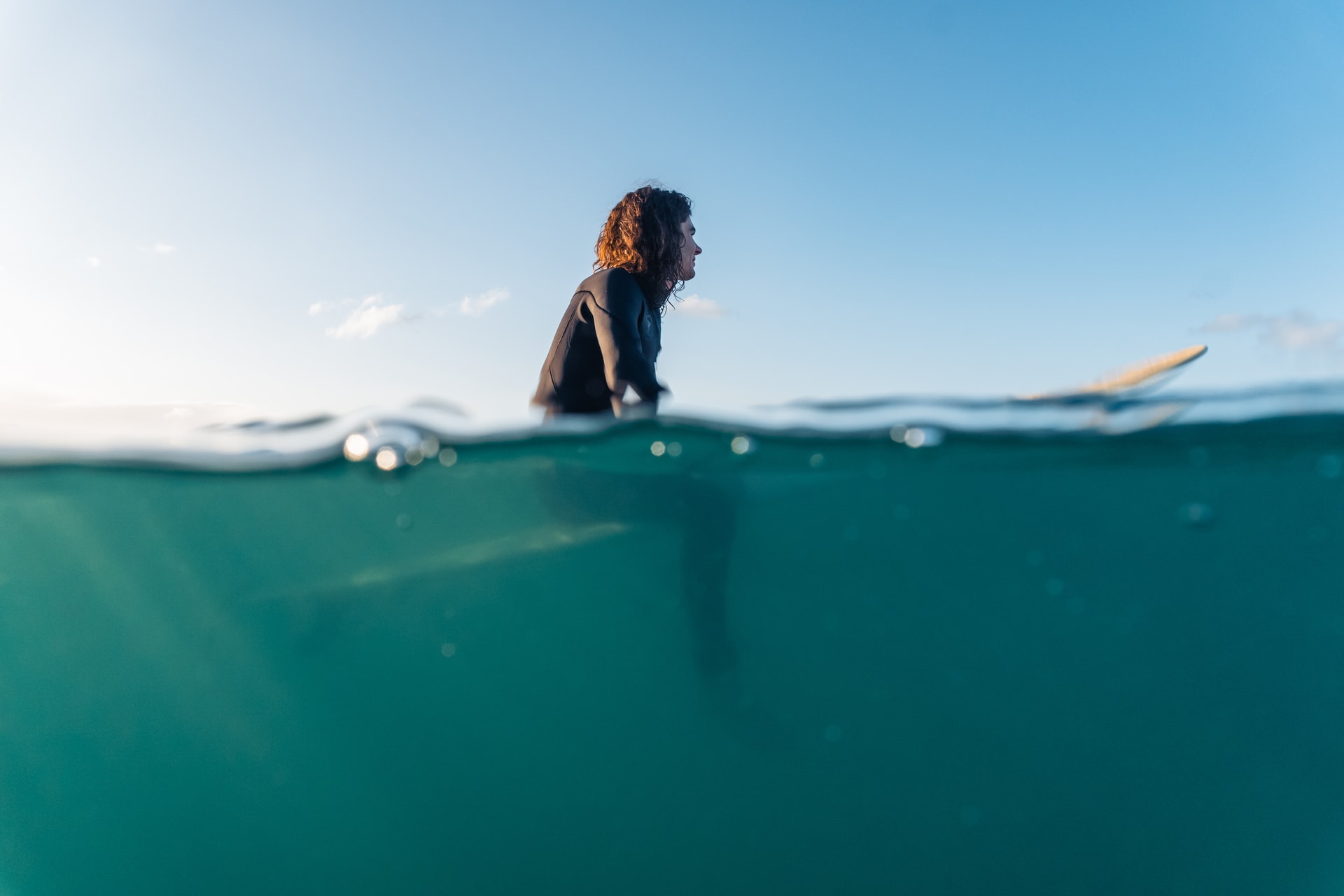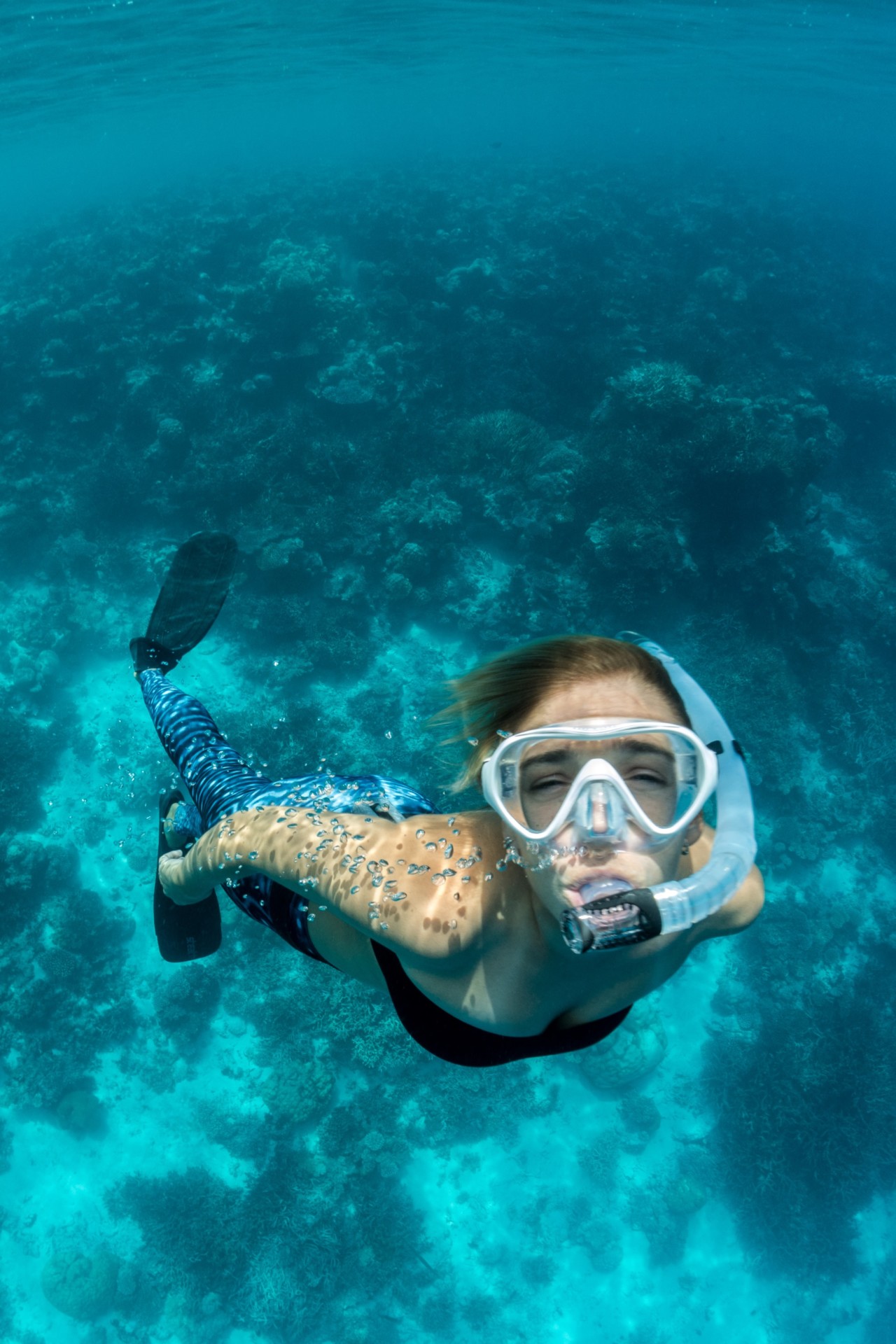Have you ever wondered how long you can safely kayak without hurting your back?
It’s easy to push your limits when you find yourself paddling through a beautiful aquatic environment.
The majority of people kayak for health and relaxation purposes, and the last thing you want to do is hurt yourself to the point that you can no longer enjoy your favorite outdoor activity.
The good news is that kayaking does not necessarily lead to back injuries. Once you learn how to paddle correctly, you can actually improve your back’s strength and flexibility.
Still, you will occasionally hear kayakers complain about “yak back”. This term describes the lower back pain and stiffness that can develop after a long day out on the water.
The majority of the cases of back pain that kayakers experience are temporary and improve with a little self-care.
Paying attention to how your body is positioned during your trip makes all the difference in the world for feeling amazing at the end of the day.
- Can Kayaking Cause a Back Injury?
- What Muscles Do You Use While Kayaking?
- How Does Paddling Build Back Muscles?
- Does Kayaking Help With Back Pain?
- Can I Go Kayaking With a Bad Back?
- How Do I Prevent Back Pain When Kayaking?
- Conclusion
- You Might Also Like…
Disclosure: this post contains affiliate links (clearly marked with ), which means we may earn a commission if you buy something through them, at no additional cost to you.
Can Kayaking Cause a Back Injury?
Your back is made up of a complex system of vertebrae, ligaments and muscles that all respond to each motion that you make while kayaking.
Minor back injuries, such as a strained muscle, are common among beginners who may not always remember to paddle correctly.
You can also experience a back injury from improperly trying to recover from a capsize. This is why learning proper techniques for handling rollovers are important.
Advanced kayakers might also develop an injury from pushing themselves too hard or experiencing an accident in rough waters.
The majority of back injuries are preventable, and doing everything you can to avoid overloading your spinal column goes a long way toward keeping you comfortable.
What Muscles Do You Use While Kayaking?
There are several back muscles that affect your movements, and you’ll use most of them at some point during every kayaking trip.
Lattissimus Dorsi
The Lats are found in your lower back region, which is where many kayakers tend to feel the strain of sitting for hours in an L-shaped position.
These muscles contract with each forward stroke of the paddles, and keeping them strong helps to prevent post-kayaking soreness.
Rhomboids
You can feel these muscles working when you bring your shoulder blades together at the end of a paddle stroke. They exist in your upper middle back area and assist with helping your shoulders retract while paddling.
Upper and Lower Trapezius
These muscles provide support as you move your shoulder blades, spine and neck. Weakness within these muscles can lead to pain when you lift your paddles or kayak.
Abdominals and Obliques
The oblique muscles run along the sides of your body and connect to your back and abdominals.
A strong core helps you to rotate your torso as you paddle without causing unnecessary strain on your spine or back muscles.
How Does Paddling Build Back Muscles?
Kayakers have a tendency to make paddling look easy.
Yet, anyone who has ever paddled for very long understands the tremendous amount of effort that goes into pushing their boat and body weight across the water.
Paddling works a lot like many common strength training exercises such as dumbbell rows. As you push against the water, resistance is created that forces your muscles to work harder.
With enough paddling, your body begins to build more lean muscle mass that makes performing perfect strokes easier.
Does Kayaking Help With Back Pain?
Building up your back muscles can improve some of the underlying causes that contribute to chronic back pain.
Back pain often arises when there is an imbalance within the spinal column. Stronger back muscles create a supportive frame for the spine that helps to keep it in alignment.
Can I Go Kayaking With a Bad Back?
People with previous back injuries should always consult with their doctor to make sure that it is safe to go kayaking.
Severe back injuries, such as a herniated disc, could potentially get worse if you place more pressure on your spine than it can handle.
Compressed nerves in your back can also get irritated if kayaking leads to inflammation within your back.
If your bad back stems from mild injuries or general soreness, then you can likely still go kayaking provided that you take proper precautions to protect yourself from getting hurt.
Try picking smaller bodies of water and plan your trips for calm weather days. This gives you the option of calling off the kayaking adventure early if your back begins to hurt.
How Do I Prevent Back Pain When Kayaking?
Although paddling works out your upper arms, shoulders and back, kayaking pain tends to occur more in the lower part of your back.
This area is known as the lumbar region, and it bears the majority of your body’s weight whether you are sitting or standing.
Many of the best strategies for back pain and injury prevention focus on protecting this region.
1. Set Your Kayak Up for Comfort
Kayaks are designed to help hold your body in the right position for avoiding back problems. You’ll first want to start by trying out different types of kayaks to find the one that fits you best.
Many people with back discomfort find that sit-in styles provide more support than sit on top kayaks.
These may be harder to get into, but they often come with features such as padded seats with higher backs that provide a greater level of support.
Special kayak seats are also available for you to add to your boat. These come with varying levels of padding in areas where you need support the most such as the lumbar region.
You can also do a lot to help your back before you leave dry land. Sit down in your kayak and double check that the footrests are in the right place for you to reach them without having to strain.
Make sure to wear the same kayaking shoes that you plan to wear on your trip since these can affect where you put the footrests.
2. Maintain Proper Posture
Sitting up straight helps to keep the spine in proper alignment, but you can also take this too far.
Trying to sit up perfectly straight can cause you to tense up your muscles, and this can lead to more strain as you paddle.
When you first sit down in your kayak, put your feet straight out in front of you. Your knees should be slightly bent with your feet resting on the pegs.
Next, straighten out your back by imagining a straight line running from it up to the sky. Now, relax your body just enough to remove the tension in your back without slouching.
Staying in this position can take some getting used to, but you’ll find it easier to naturally fall into the proper posture as you gain more experience with kayaking.
3. Use the Correct Paddling Technique
An improper technique can cause you to overly rotate your torso as you paddle, and this can cause injuries to your lower back and obliques.
Make sure to stay within the paddler’s box (learn more about it here), and use your core muscles to power the strokes.
Take time to notice any areas of your back or shoulders that seem to be straining as you paddle. This is usually a sign that you need to focus on refining your technique.
4. Carry Your Kayak Correctly
Kayaks can range in weight from 20 to over 100 pounds. Choosing a lighter weight kayak is an obvious move to make if you have concerns about your back.
Back injuries can also occur when you aren’t actively paddling if you lift the kayak wrong. Practice lifting your kayak using your legs instead of your back much like you would any other heavy object.
If you have a heavy or larger kayak, then ask for help from your kayaking buddy.
Using a kayak cart makes moving your kayak around so much easier, and team lifting a kayak to the roof of your vehicle is your best bet for avoiding an injury.
5. Stretch Before and After Your Trip
It only takes about 15 to 20 minutes for pressure from sitting to begin to cause your back to stiffen up.
When you consider the driving time to most kayaking destinations, you can see why your back may already hurt before you unload your boat.
Giving your body a little warm up helps to get blood flowing to your muscles and increases your back’s flexibility.
Plan for enough time that you can do a few simple back stretches before your trip.
Bending over to touch your toes is a simple move that you can do pre-trip to get your muscles limber. Trunk rotations are also great for loosening up the muscles that you will use while paddling.
After you get home, try doing a few special stretches that are designed for paddlers. These help to prevent post-kayaking soreness.
6. Look for Opportunities to Change Positions
Depending upon your kayaking route, you could be looking at hours in the paddler’s seat. However, you might be able to find a few places to stop and take a break along the way.
River and lake kayaking often allows you to come close enough to the shoreline to pull off for a break. Consider getting out and walking around for a minute or two before you go back to paddling.
This gives your back a chance to readjust. Even when you go back to sitting with proper posture, there should be enough minor changes in your spinal alignment to alter the areas that receive the most pressure.
Sea kayaking and other lengthy excursions might not permit you to get out of your boat. In this case, look for chances to give your body a break.
In calmer waters, you can take a brief break from paddling and do a few hip movements and bends to loosen up a tense back.
7. Treat Sore Muscles at Home
Normal muscle soreness often occurs after a long or particularly strenuous kayaking trip.
Try to avoid the temptation to stop using your back muscles. Sitting or laying down too long at home can cause the muscles to tense up more.
Instead, do some gentle exercises at home such as bridges and planks to keep your back muscles from freezing up.
You can also use your preferred methods for back pain relief. Ice, heat and massage are time tested methods for easing back pain.
Anti-inflammatories and pain relievers might also be helpful if your back pain resists natural self-care methods.
Mild back discomfort should clear up within a few short days after your trip. If it persists, then make sure to get it checked out. Most back injuries respond best when you address them early.
Conclusion
An occasional case of back pain after kayaking is normal, especially if you’ve pushed yourself to your limits. Yet, you should never find that your back pain causes you to opt out of an enticing adventure.
The majority of kayaking-related back pain comes from poor posture and prolonged amounts of time spent sitting in the seat without adjusting your position.
Take care of your back by maintaining good posture and using safe lifting techniques both when you’re in the paddler’s seat and in your every day life.
A little bit of back care now means that you can look forward to many years of kayaking down the road.
You Might Also Like…
-
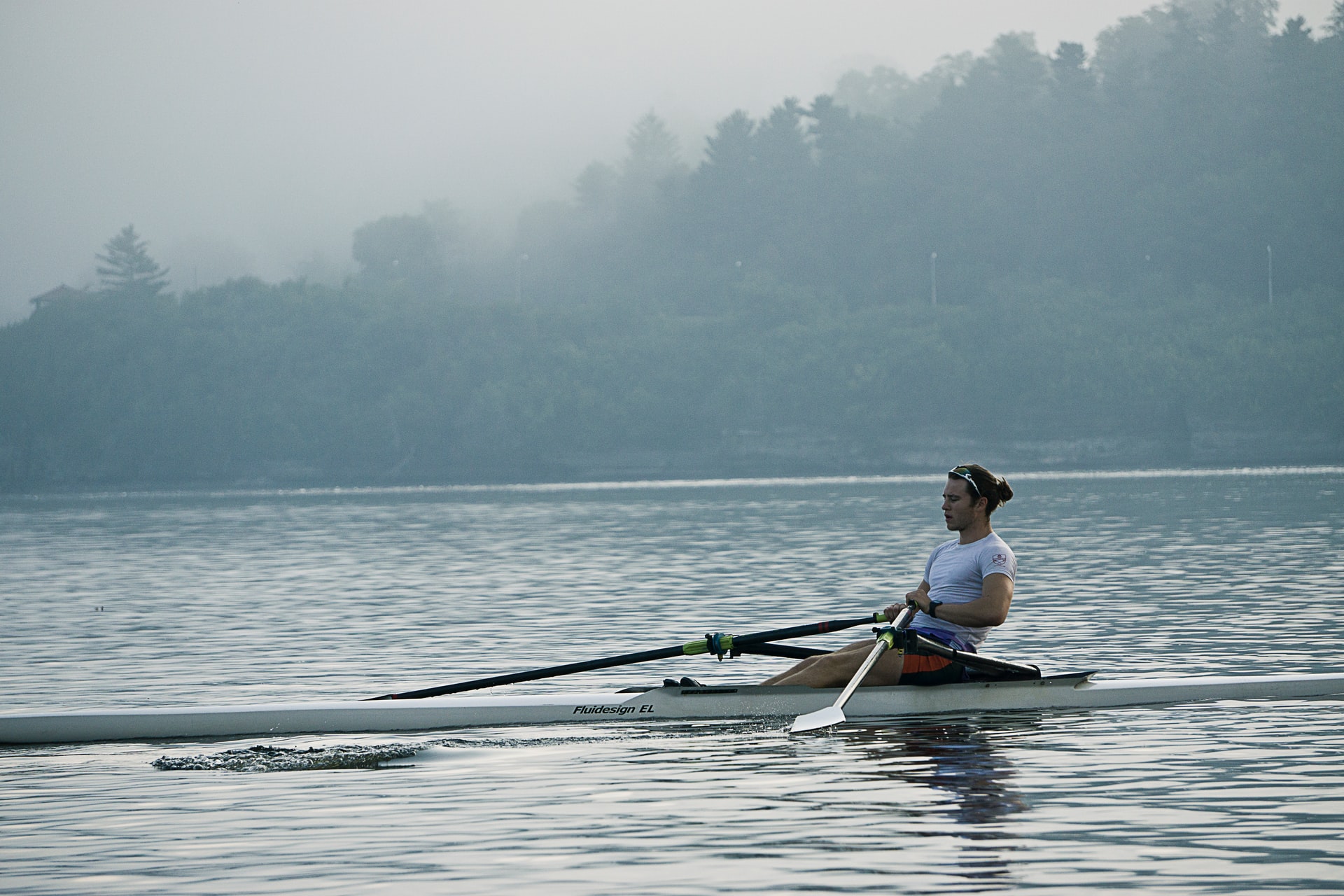
Kayaking Vs. Rowing: What’s the Difference? (8 Key Differences)
-
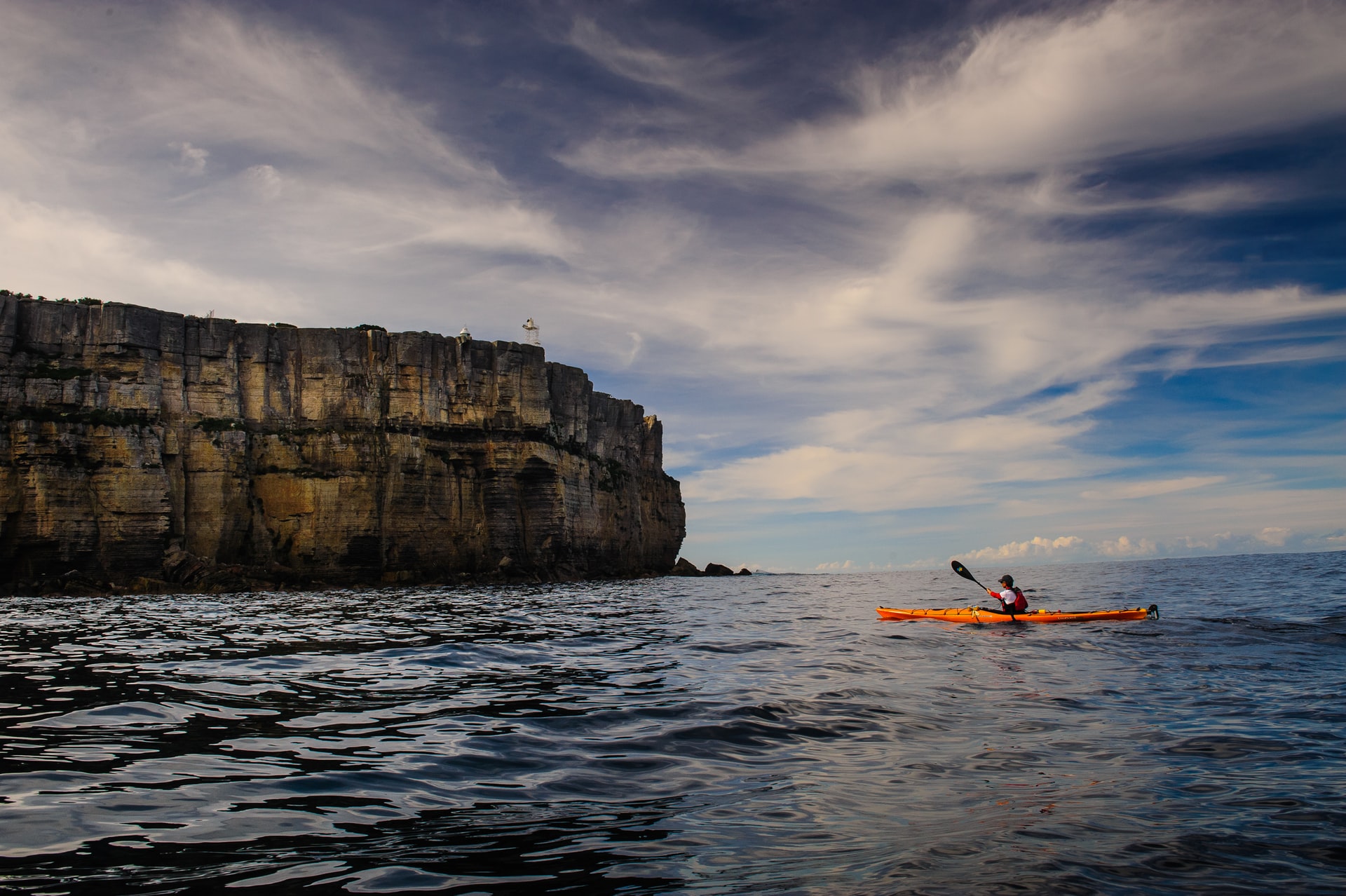
When Is It Too Windy for Kayaking? (Crucial Facts You Should Know)
-

When to Go Kayaking? (What Every Kayaker Should Know)
-
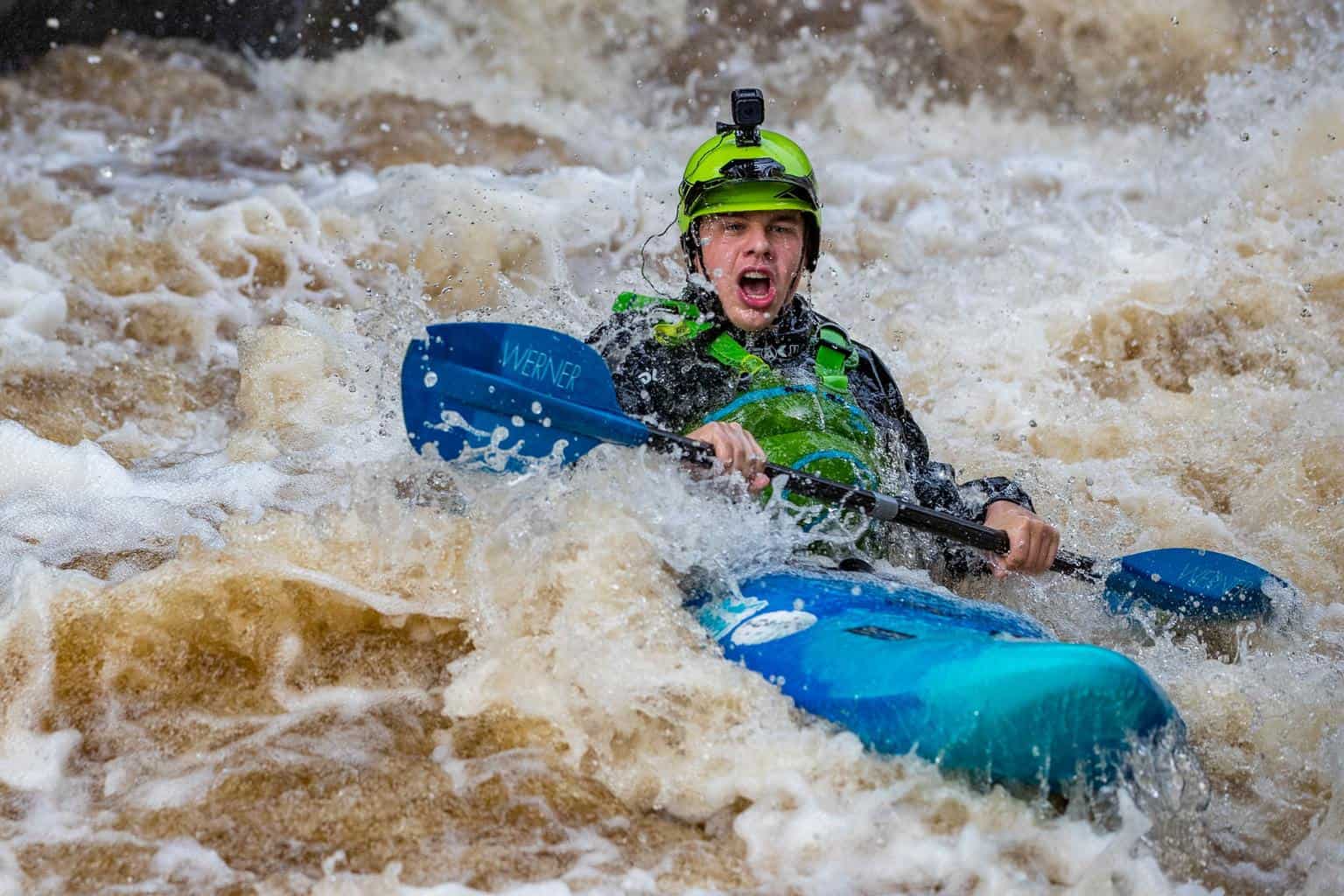
Will I Get Wet Kayaking? (Common Reasons & How to Stay Dry)
-
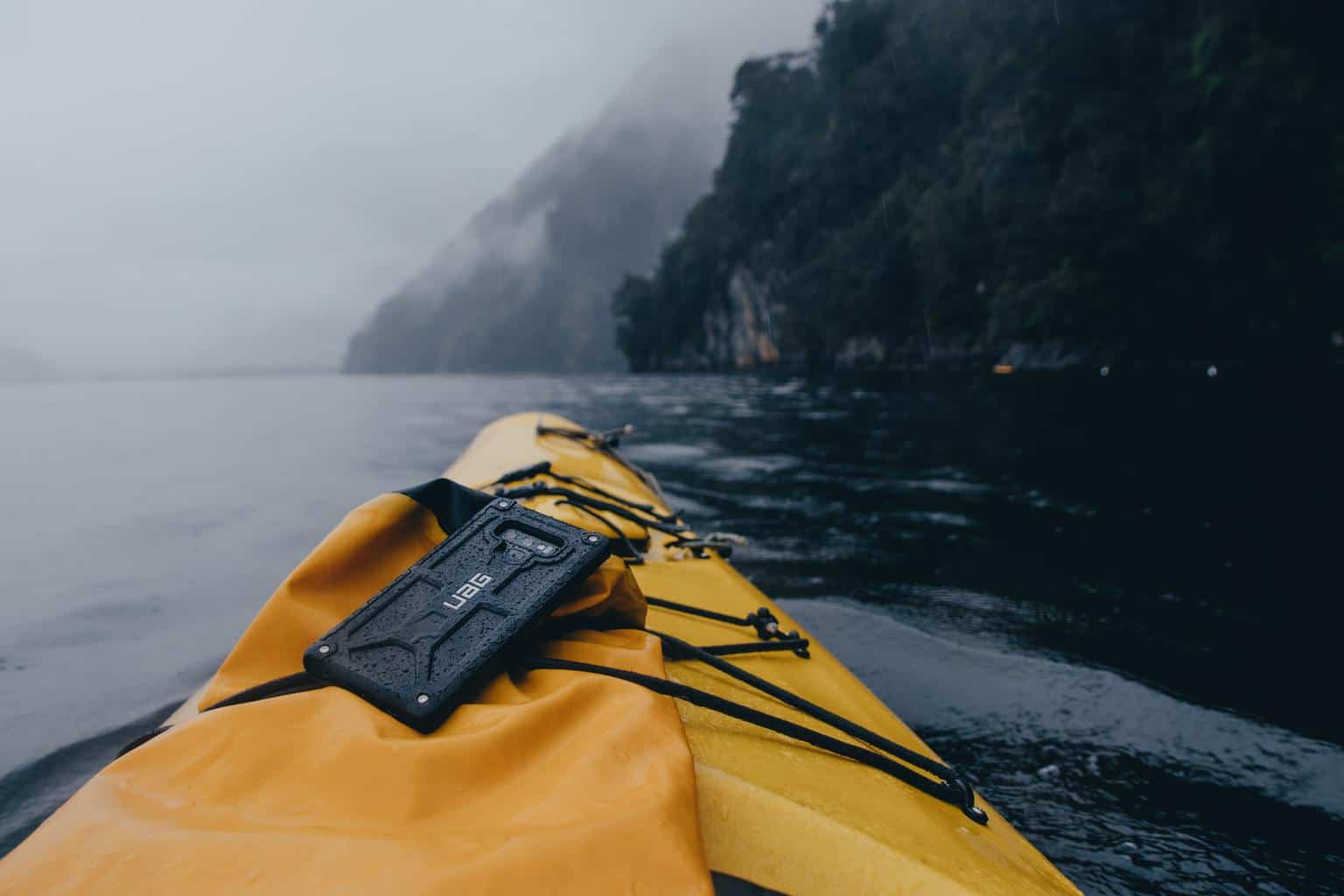
Should I Bring My Phone Kayaking? (7 Good Reasons)
-
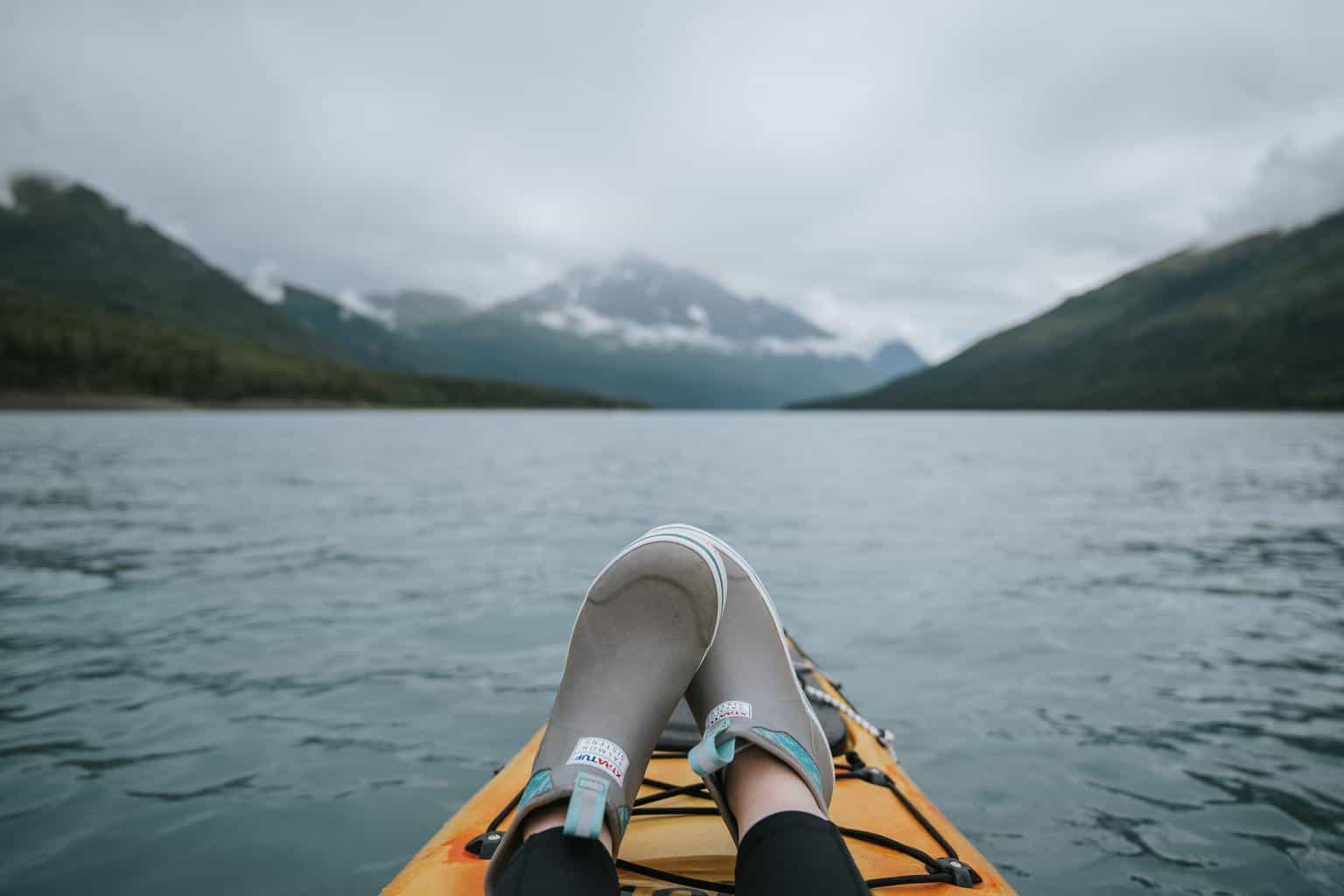
What Shoes to Wear Kayaking? (+ the Best Shoes for Your Needs)
-
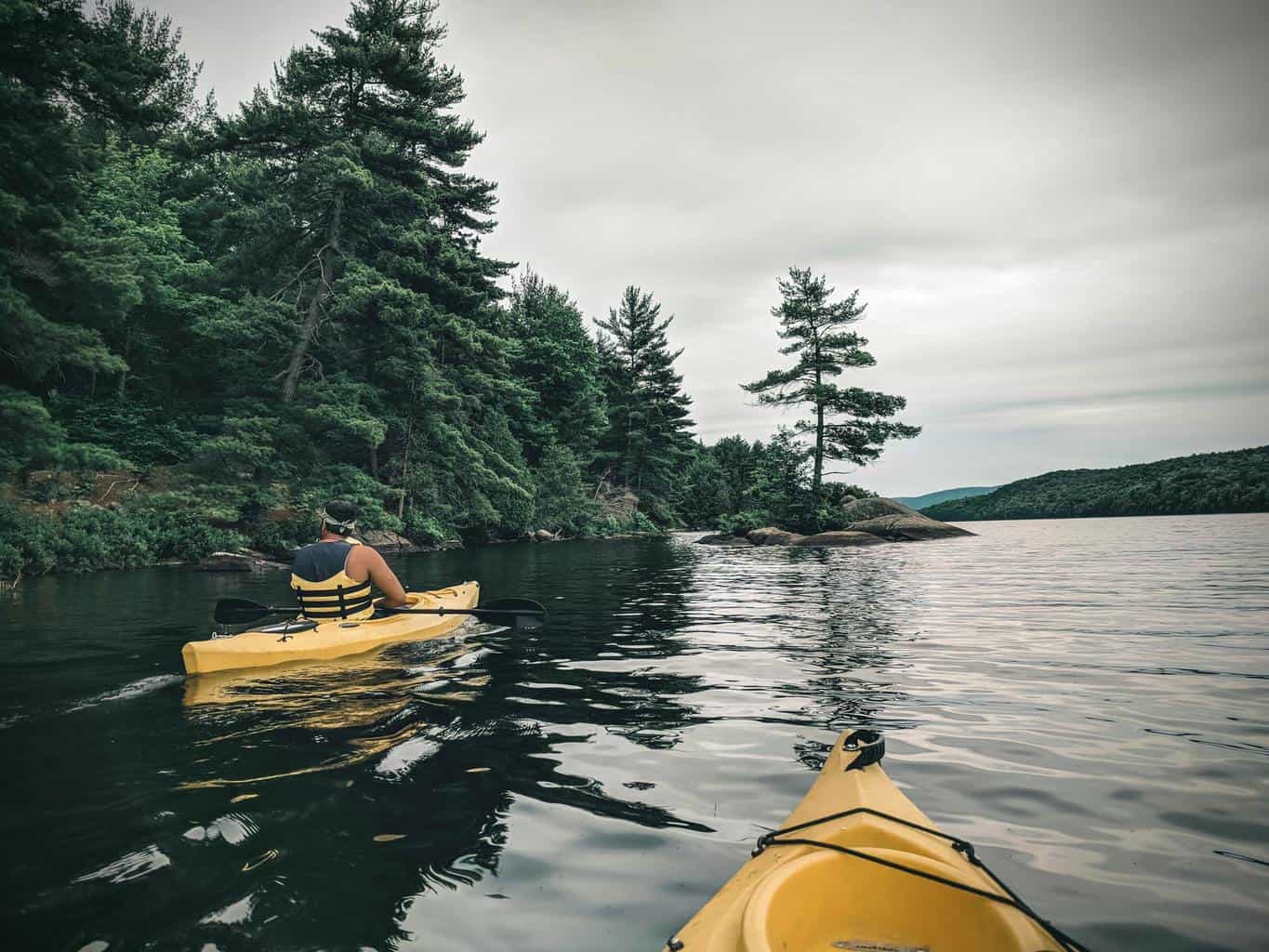
Can Kayaking Cause Chest Pain? (What Every Kayaker Should Know)
-
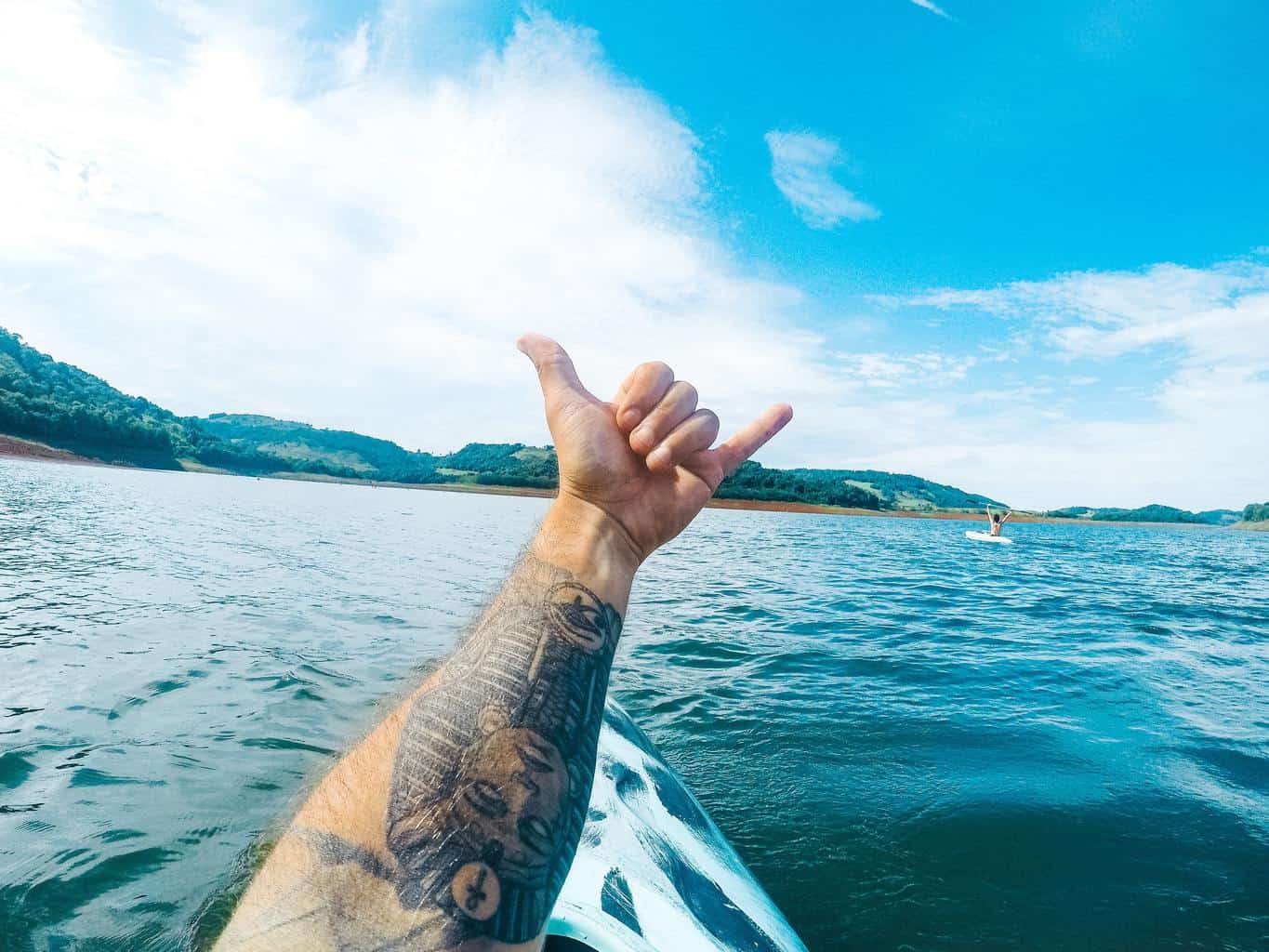
Can I Go Kayaking With a New Tattoo? (Facts You Should Know)
-
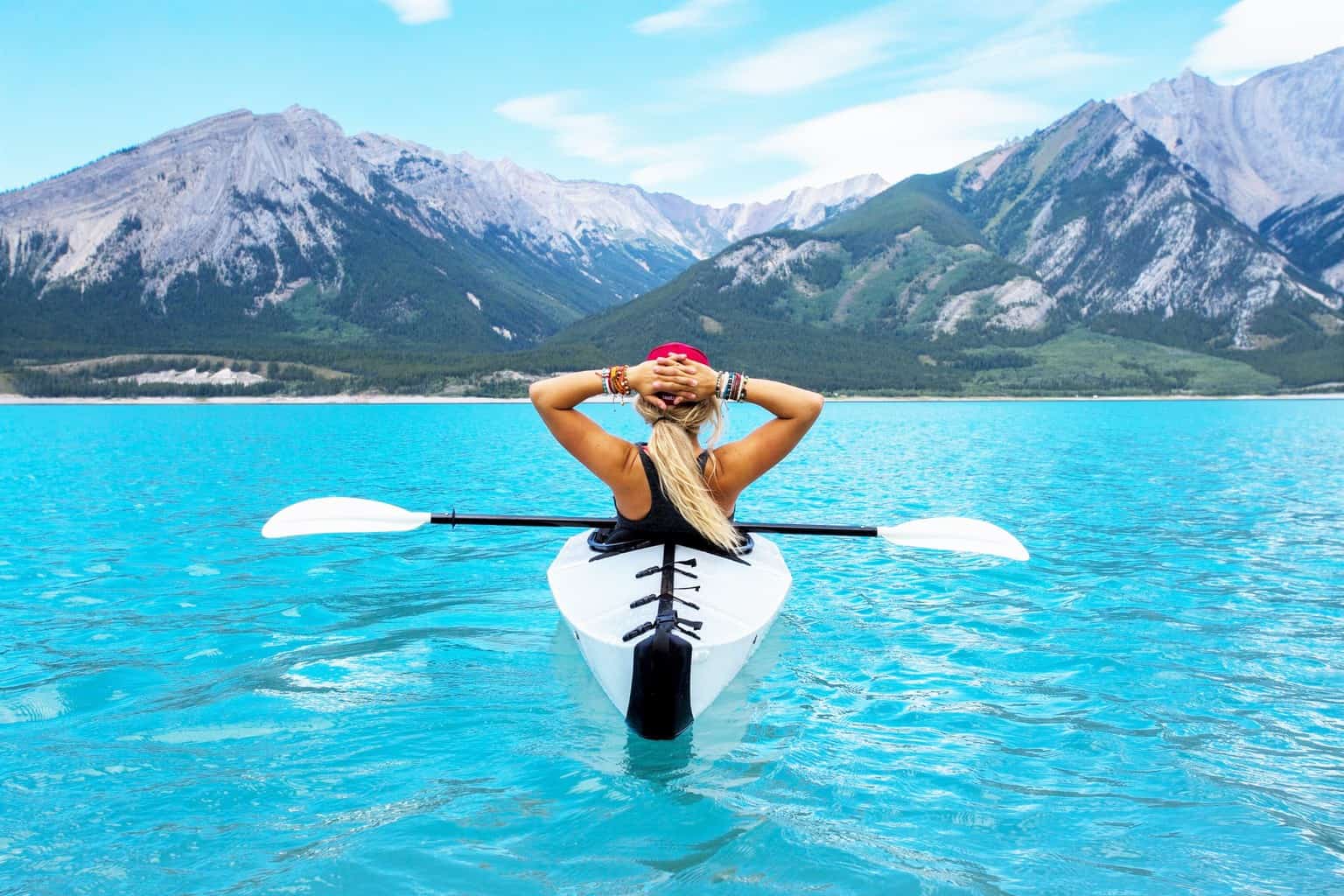
Can You Go Kayaking On Your Period? (+Practical Tips)
-
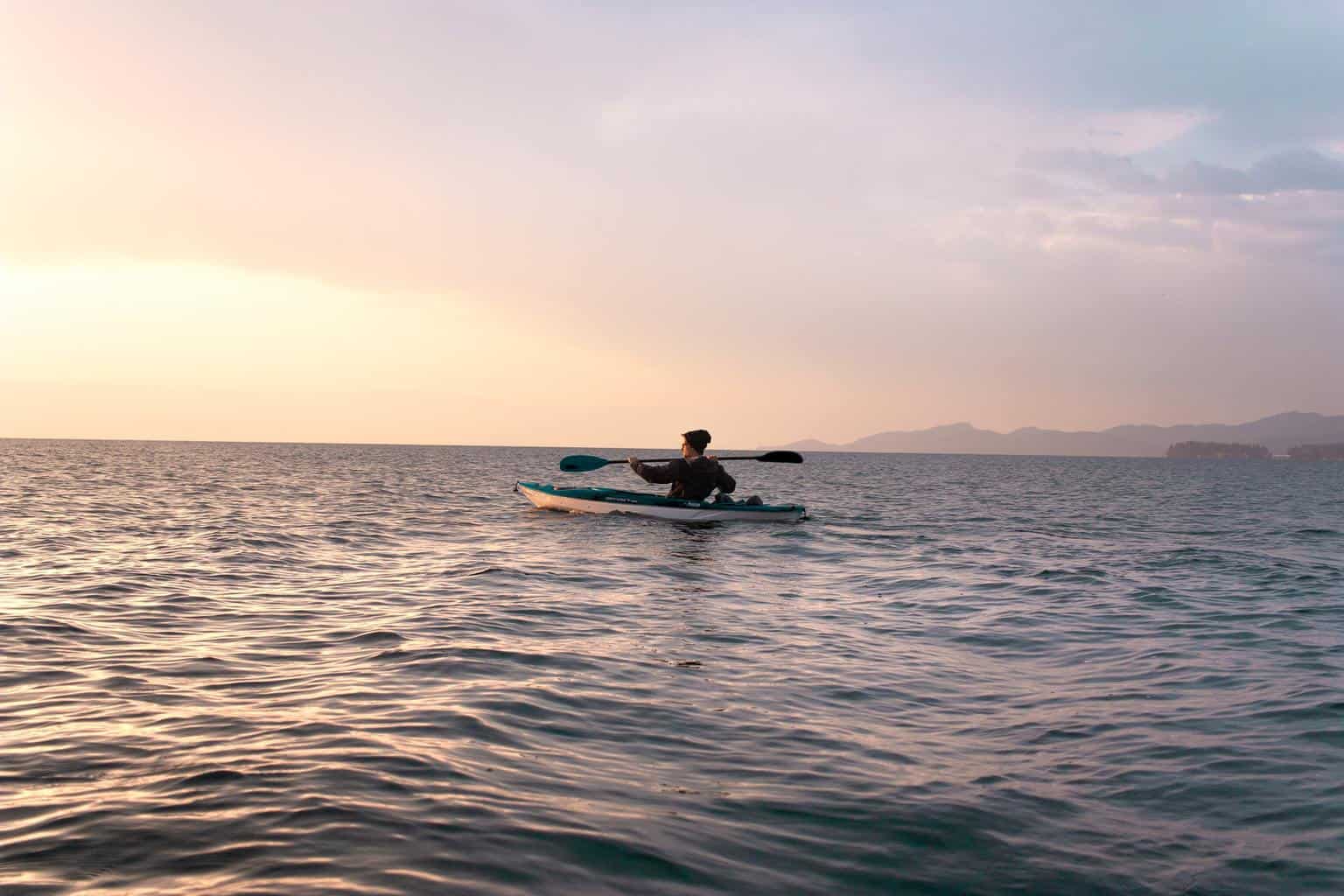
Can Kayaking Cause Hemorrhoids? (What Every Kayaker Should Know)
-
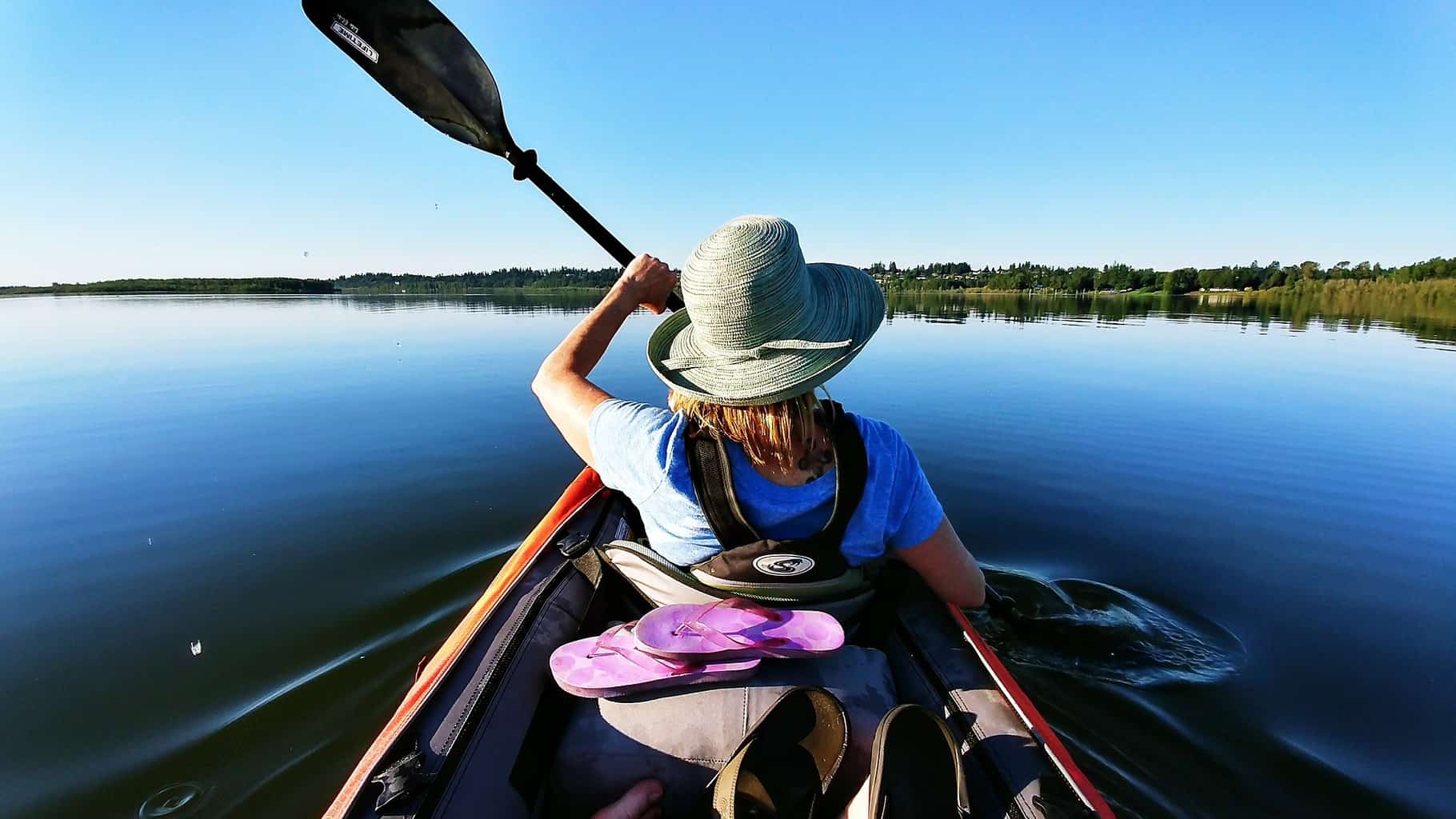
Can Kayaking Cause Tennis Elbow? (+8 Simple Tips to Avoid It)
-
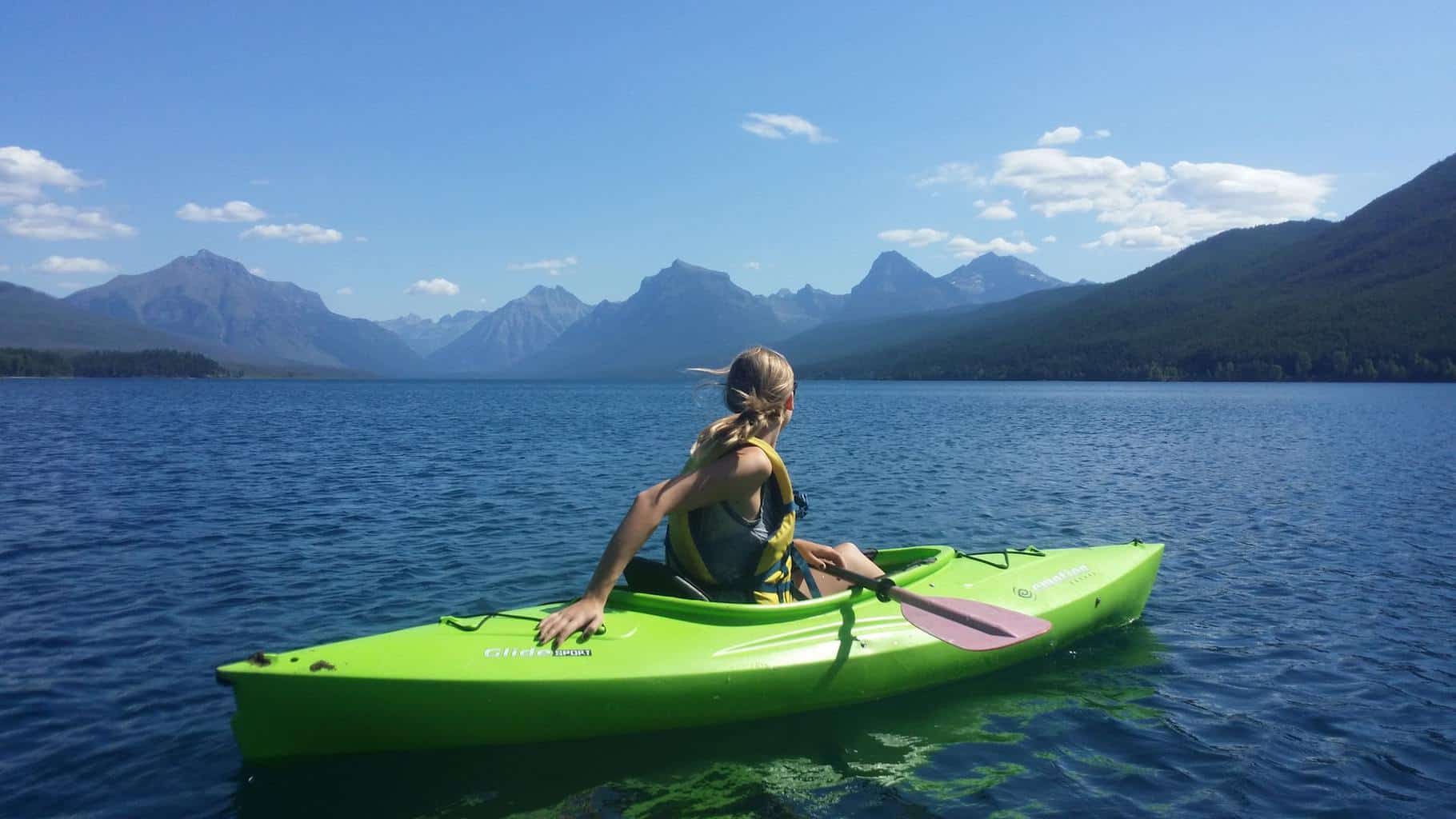
Can Kayaking Cause Sciatica? (+7 Tips to Avoid It)

